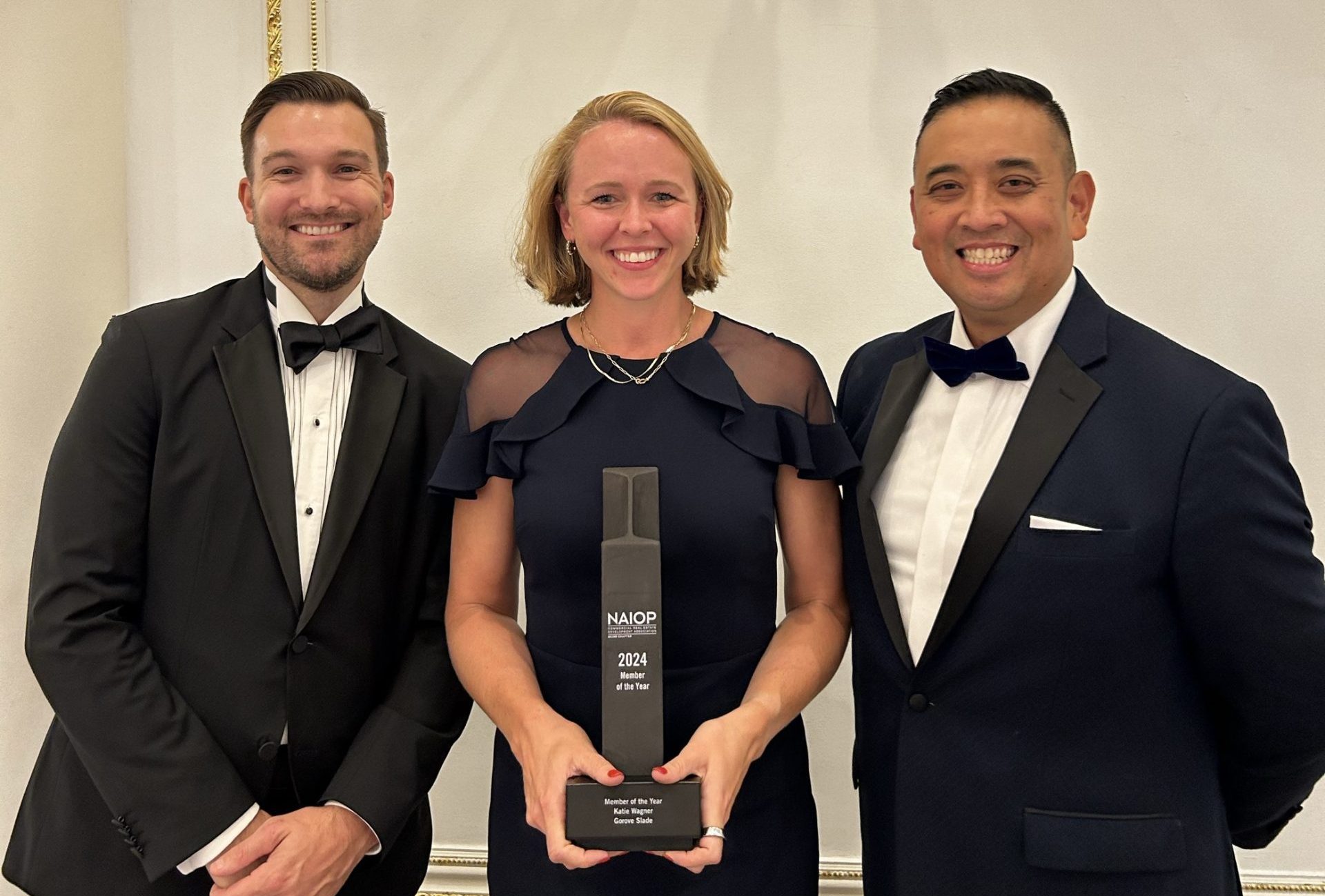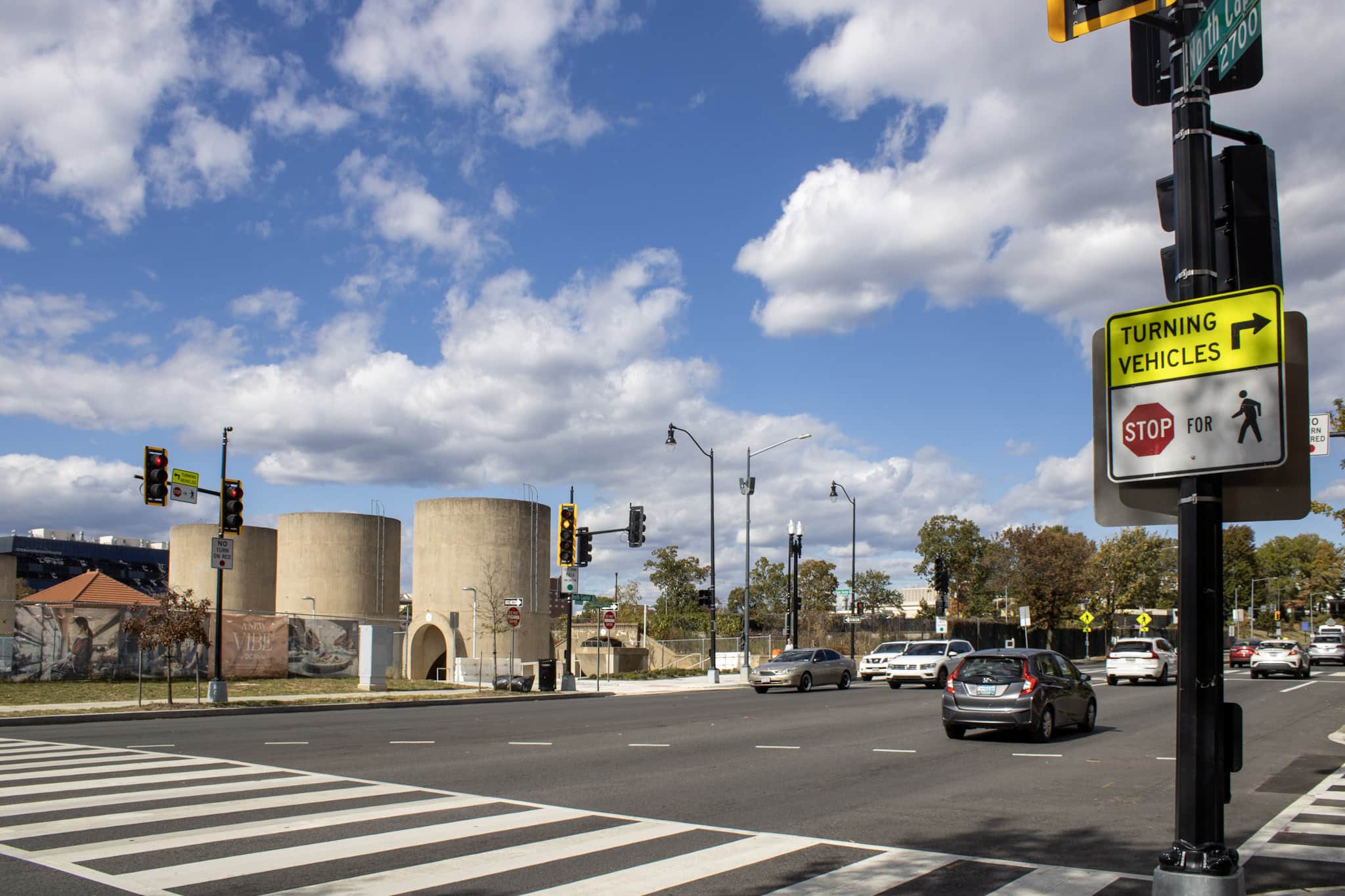
Katie Wagner Named NAIOP MD|DC Member of the Year

NAIOP MD|DC Member of the Year recipient Katie Wagner (center), pictured with colleagues William Zeid (l) and Erwin Andres (r) at the 22nd Annual Awards of Excellence Gala
Gorove Slade is pleased to announce that our colleague Katie Wagner, PE, PTOE, has been recognized as the 2024 Member of the Year by NAIOP DC|MD. This honor was presented during NAIOP’s 22nd Annual Awards of Excellence Gala on September 25 at the Waldorf Astoria in Washington, D.C. The Gala is a significant event in the national capital region, recognizing notable achievements in real estate.
Katie joined the NAIOP DC|MD Chapter’s Leadership Committee in 2021 and is also a member of the Prince George’s Counties Committee. Members commit to providing leadership in strengthening relationships, promoting quality economic growth, supporting businesses, implementing development, and sustaining our communities today and for the next generation. A key part of Katie’s service included serving on the Transportation Advisory Group for Montgomery County’s Growth and Infrastructure Policy 2024-2028 update. She helped organize stakeholders around unified goals and testified in front of the planning board and planning council on behalf of NAIOP. Earning this award underscores Katie’s contributions to the field and her commitment to excellence.
“I was honored to have received this award. Thanks to Gorove Slade and my colleagues for the support as we transform the transportation network that moves the built environment.”
As a principal at Gorove Slade and the leader of our Maryland office, Katie has demonstrated strong leadership skills and expertise in transportation planning and engineering. With extensive experience in transportation planning and engineering, Katie has led projects for various clients throughout the District of Columbia, Maryland, and Virginia. Her work encompasses traffic impact studies, traffic simulation, site access and circulation planning, roadway signing and striping plans, traffic signal design, functional parking lot and garage design, and Transportation Demand Management (TDM) planning and analysis. Katie is particularly interested in urban projects and multimodal transportation solutions, making her an asset to our team and the industry. In addition, Katie’s focus on People and Culture has helped create an environment emphasizing organization, efficiency, teamwork, and staff development.
In addition to her work at Gorove Slade, Katie is involved in several professional organizations. These include the Institute of Transportation Engineers (ITE), Urban Land Institute (ULI), Commercial Real Estate Women Network (CREW), and Maryland Building Industry Association (MBIA). Katie has completed ULI’s Leadership Institute and was recognized with the Champion Award by the DC chapter of CREW in 2022, demonstrating her commitment to professional development.
NAIOP, the National Association of Industrial and Office Properties, is the leading organization for commercial real estate development professionals. The NAIOP DC|MD chapter, founded in 1990, represents the region’s leading firms in all commercial real estate industry aspects.
We’re incredibly proud of Katie’s achievement and ongoing dedication to advancing transportation solutions in our region. Congratulations once again, Katie, on this well-deserved honor!
